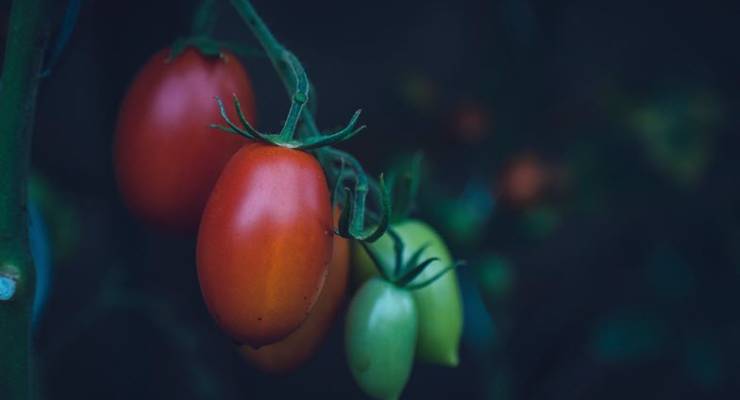
There are those wont to fret about little things, such as a palpable breakdown of all the planet’s systems, the failure of leaders to do a damn thing about it, etc. We call this sort of thinking “glass half full”. I prefer a “glass entirely shattered” perspective. This helps me find solace in tomato cultivation, an annual act of selfishness that begins in most Australian climate zones right now.
Consider the fact of life in a nation whose government refuses to legislate against harmful emissions, meaningfully invest in carbon draw-down tech or adopt even the Paris climate agreement as law. One could be all teary and “We Borrow the Earth From Our Children” about it, or, one could party in the garden like a grandparent.
Just like the nonagenarian, the climate-conscious gardener now has very few shits left to give. We all know that without a co-ordinated state effort to address climate change as the material, not the moral, question of our times, we’re stuffed. We know, despite what that bloke from The Chaser says, personal feats of environmental kindness mean bupkis when enacted against the backdrop of profit-led worldwide devastation. Ergo, might as well work against the elements and grow tomatoes in drought.
It was the unfeasibly pleasant Lawrie Zion, once a colleague and now a professor of journalism, who first alerted me to this cultivar. Lawrie was growing the Black Krim, the Asemina and the Marmande long before the heirloom tomato fetish of the present. Every year in his postage stamp inner-Sydney backyard, he worked to produce a bush with berries each the size of a house cat. There’s not a knowledge-class worker alive so conversant with fertilising methods.
One can get quite caught up in all this fish emulsion business. But, please, do not be dissuaded by expert prescriptions. Yes, you will need to nourish your plants a few times throughout the growing season. No, you don’t even need to look at the NPK (nitrogen, phosphorus and potassium) ratio on the fertiliser bag. You only need to look for the word “tomato” in the garden centre shelf marked “fertiliser” and if, like me, your knowledge of the periodic table depends almost entirely on the credits in Breaking Bad, you’re okay. Your plants will still bear fruit. Even without a stake — going stakeless is, in fact, a current fad.
I will recommend a start from seed. This might seem the advice of an extreme hobbyist, but is that of a cheapskate. One can buy an open-pollinated seed packet by mail for as little as a dollar. Germinate indoors easily with environmental offence the peat pot, commonly sold as “Jiffy”, or in a mix. If raised in a loo roll or a peat pot, these seedlings dodge the fatal shock of transplant the store-bought kind can suffer. Also, one can be a snob about one’s rare Wapsipinicon Peach. They don’t sell that at Bunnings. They do, however, sell stock from the Digger’s Club, which you might prefer if you wait, as those in southern states should, until around Grand Final time to think about planting the nightshade. (Please note that the smoky “black” varieties are among later fruiting plants, so a Sydney, Melbourne, Adelaide or Perth gardener has almost until Christmas to get such seedlings in the ground.)
Anyone with a balcony or a small space exposed to all-day sun can grow a flipping tomato. Though I have a yard, I find greater success by planting in a pot. This is perhaps due to my tendency to drink beer while watering in summer’s twilight; I can never remember how long I’ve been standing there with the hose. A contained medium — which must be potting mix and never soil — reminds me that it’s time to quit when the water flows over its saucer.
Look. Even if all you can find by the end of the planting season is one of those supermarket-style Big Boys — and I do not recommend cultivating a thick-skinned thing bred to withstand the hardship of transport — you are likely to enjoy the Journey. The war against weeds and nature is an agreeable one and the taste of one’s own productivity, even if Late Blight-afflicted, is bound to be palatable. It is not a chore, really, to learn firsthand about all the fungi and pests that can ruin your children. It’s a rolled-gold excuse to get away from everything and everybody and swear at thrips instead of the Prime Minister.
The places you’ll go in the garden! My friend Gary reads his tomatoes different accounts of communism (State and Revolution currently has the highest yield.) My neighbour Katerina tells me she forgets her widowhood in the very act of maintaining the work of her late husband. My partner tells me that I am 30% more pleasant throughout the growing season.
Here’s the horticultural upside of “glass entirely shattered” thinking: for as long as the state approaches the market as its bestie and not the very ground on which we walk, we may as well do inefficient things with tomatoes out the back in summer. We’re all going to die, grandma. Party on.








You temptress!!
In my part of the world, the Southern Highlands in NSW, I always plant too early and manage to catch one final severe frost event. Happy growing, nudge nudge.
What are you implying? That I am some sort of hipster cultivator? After the style of Todd Sampson?
Wink.
I’d need to see an inventory of your smarmy T shirt collection before I could possibly make such a damning judgement.
On the issue of fertiliser….Australian politics eh!
Dear Helen,
That was a fabulous article. How would I get permission to re-print it in my garden club’s quarterly magazine?
richard.
Hi, RH. Please email me helen@badhostess.com and we’ll work it out!
A very timely article, Helen. I have Violet Jasper and Topaz seeds coming in the mail. Jiffy pots are now on tomorrow’s Bunnings list.
Hi, C. Peat is, of course, a no-no. But it really does retain moisture and will bring good seedlings forth. I find cutting the net a little when the seedling has matured is a good idea, as the material endures in the ground. Seed now and in six or so weeks (presuming you live in an area with no risk of frost) you’ll be very proud to plant her out.
Some use a very weak seaweed solution on young seedlings. As you probably know, they feed on nitrogen in early green life.
Yeah, peat is a no-no- it’s a finite resource now and becoming more so thanks to AGW. Your mention of loo rolls hit me afterwards- in a house full of women we generate a few. And then there’s egg cartons, of course.
Ahhh. The Solanaceae of solace, my little love apple.
My father was a man of the Ming Era, and (always with his spade on his right, to lean upon), grew surely the best tomatoes in Melbourne’s eastern suburbs. Dinner was very largely home-grown and politics was never discussed because we had a leader, and even those whose shovel was on the other side had to (unspokenly) admire him. Now we deliberate endlessly about our leaderless politics and can’t grow a choko. Helen, thank you for the balance you bring in a time of despair. The seeds will be in my patch of ground tomorrow – I think midday would be an auspicious time for planting. May there be an election before the harvest.